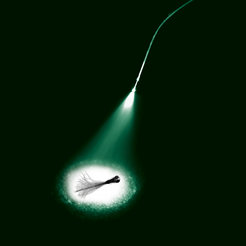Optogenetics

Hardly any other method has influenced the neurosciences since the early 2000s as much as optogenetics. This technique allows scientists to switch on or off individual neurons or neuronal networks in the brain of living animals by shining light on them. Optogenetics thus enables researchers to investigate the communication of nerve cells or, for example, to establish relations between neuronal activity and behavior.
Dieter Oesterhelt, of what is now the Max Planck Institute of Biochemistry, and his colleague Walter Stoeckenius laid the foundation for the method in the 1970s [1]. The researchers investigated light sensors in a bacterium and showed that a light-sensitive protein, bacteriorhodopsin, enables a flow of ions when exposed to light, thus polarizing the cell.
Aided by new molecular methods, scientists then succeeded in introducing light-sensitive proteins into the cell membranes of nerve cells in the early 2000s. Introduced proteins such as Channelrhodopsin react to blue light by allowing positively charged ions to enter the cell. This changes the voltage across the membrane and creates an action potential in the neuron - it becomes active. Another protein, Halorhodopsin, allows negative ions to enter the cell under orange light. This inhibits the cell’s activity.
Scientists can combine the proteins with a regulatory element, directing the "light switch proteins" only to specific nerve cells. In this way, it is now possible to manipulate the activity of selected neurons with a corresponding light pulse.
Optogenetics is developing rapidly. Nowadays, researchers are able to specifically activate individual nerve cells as well as individual cell structures. In addition, first studies are investigating the possibility of using optogenetics for medical issues, e.g. to assist blind or deaf people. However, optogenetics is currently foremost an important instrument of basic research – enabling new insights into the workings of the brain.

